What’s next for the pets and wildlife caught up in the Californian wildfires? And how you can help
The impact of the Los Angeles wildfires on pets and wildlife has been devastating, but there are things you can do to help from afar
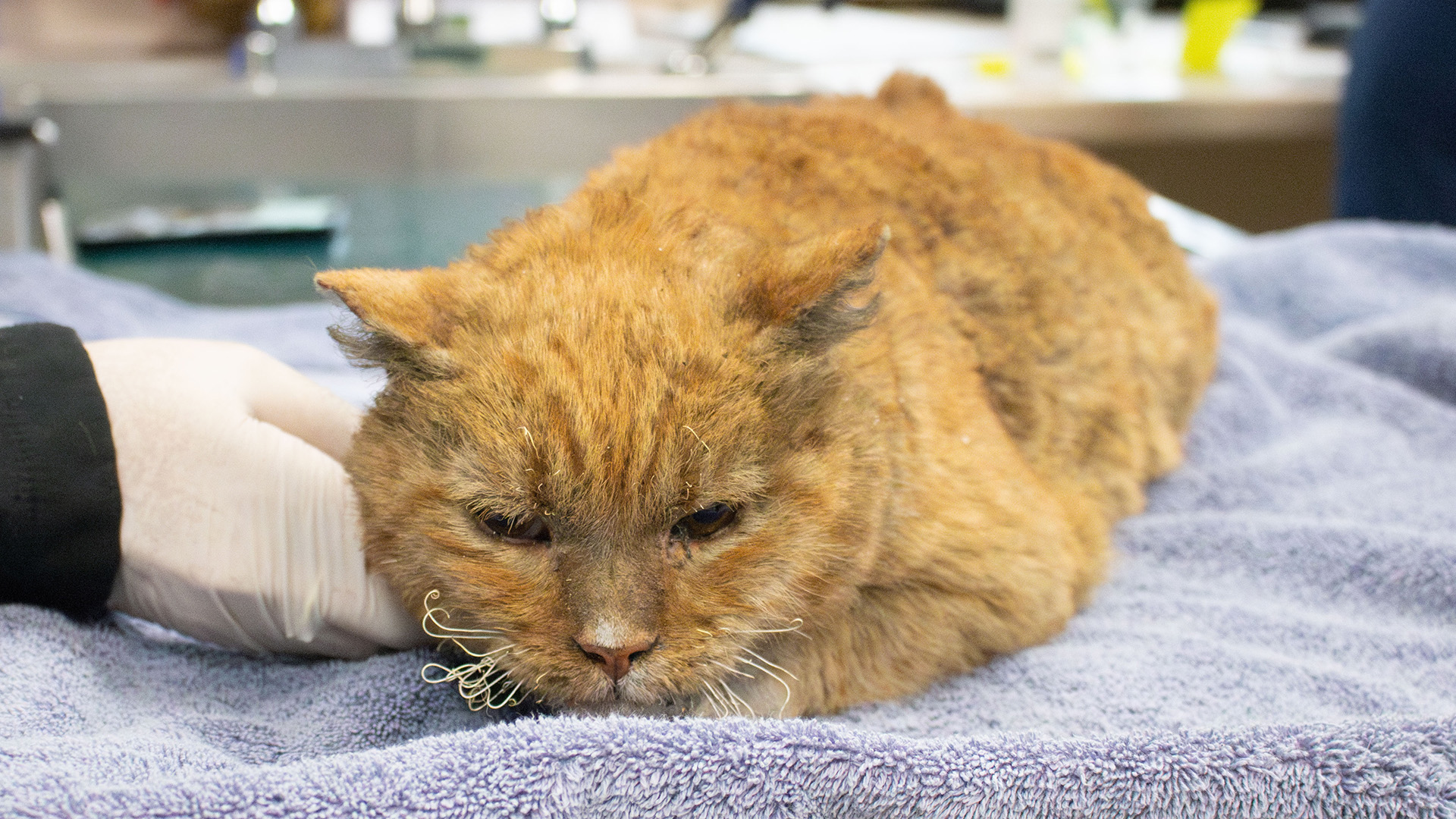
They say the day your life changes starts out as any other ordinary day. When the Los Angeles wildfires began in Pacific Palisades, the estimated 5.3 million pet dogs and 5.7 million pet cats living in Los Angeles County, I dare say, did not expect their lives to unfold in the catastrophic way in which they did.
I have spent much time in Los Angeles, and Pacific Palisades is close to my heart. I’ve drunk coffee in the 100-year-old Starbucks building (now destroyed by the fires), toured Palisades Charter High School and Palisades Charter Elementary School with my two boys some years ago and shopped in Pali’s grocery stores.
The loss of lives, homes, land, businesses and communities is beyond the faculties of human imagination. Although LA is not new to wildfires, this one has been vicious and vast, creating what could be mistaken for an apocalypse, and it’s not just limited to the Palisades. Four fires have devasted Los Angeles, with Palisades being the largest, followed by the Eaton fire. At the time of writing, these fires are continuing to burn. Pets and wildlife cannot escape the fire’s path and fury either and are suffering untold fear, injuries and trauma whilst pet owners desperately try to take care of the furry members of their family or search.
What’s happened to the pets in the LA fires?
The City of Angels is home to many loved and well-cared-for pets, from cats to dogs to tortoises to horses. When evacuation orders hit with little warning, owners fought to bring their pets with them, but not all could find them or make it back home in time to rescue their four or two-legged pals.
Some pets became separated from their owners in the chaos or sadly got left behind. Those at work, for example, were not allowed back into their properties by the time owners reached their homes. Several homeowners thought they had more time than they did to collect belongings as no one expected the fire to turn into the monster it did.
Unfortunately, some animals have not survived the fire; others are injured, traumatized or missing. The lucky ones escaped with their owners to a place of safety (a parent’s house or a pet-accepting hotel, for example). Animal rescue teams, shelters, and volunteers quickly stepped in to try and save pets from dangerous areas … dogs, cats, rabbits, and even livestock have been found hiding in burnt-out buildings or wandering through smoke-filled streets. Regardless of whether they are alone or not, animals are frightened, disoriented, and vulnerable.
Efforts to save the pets and wildlife of the LA fires
The efforts made by the people of Los Angeles in such an unprecedented situation are both heartwarming and inspirational. Many individuals have offered their time to search and rescue animals or to temporarily house pets. Volunteers and pet supplies have turned up in droves at rescue centers and animal shelters following public calls for help.
Get the best advice, tips and top tech for your beloved Pets
I’ve watched footage of firefighters reviving collapsed dogs on the sidewalks with their human resuscitation bags and female firefighters carrying terrified, hefty Weimaraners (on top of all their equipment and no doubt after long hours of controlling the fires) to safety. Firefighters rescuing pets from burning buildings is a common sight, even a reporter and his producer broke into a home to rescue three dogs live on air, as reported by CBS News.
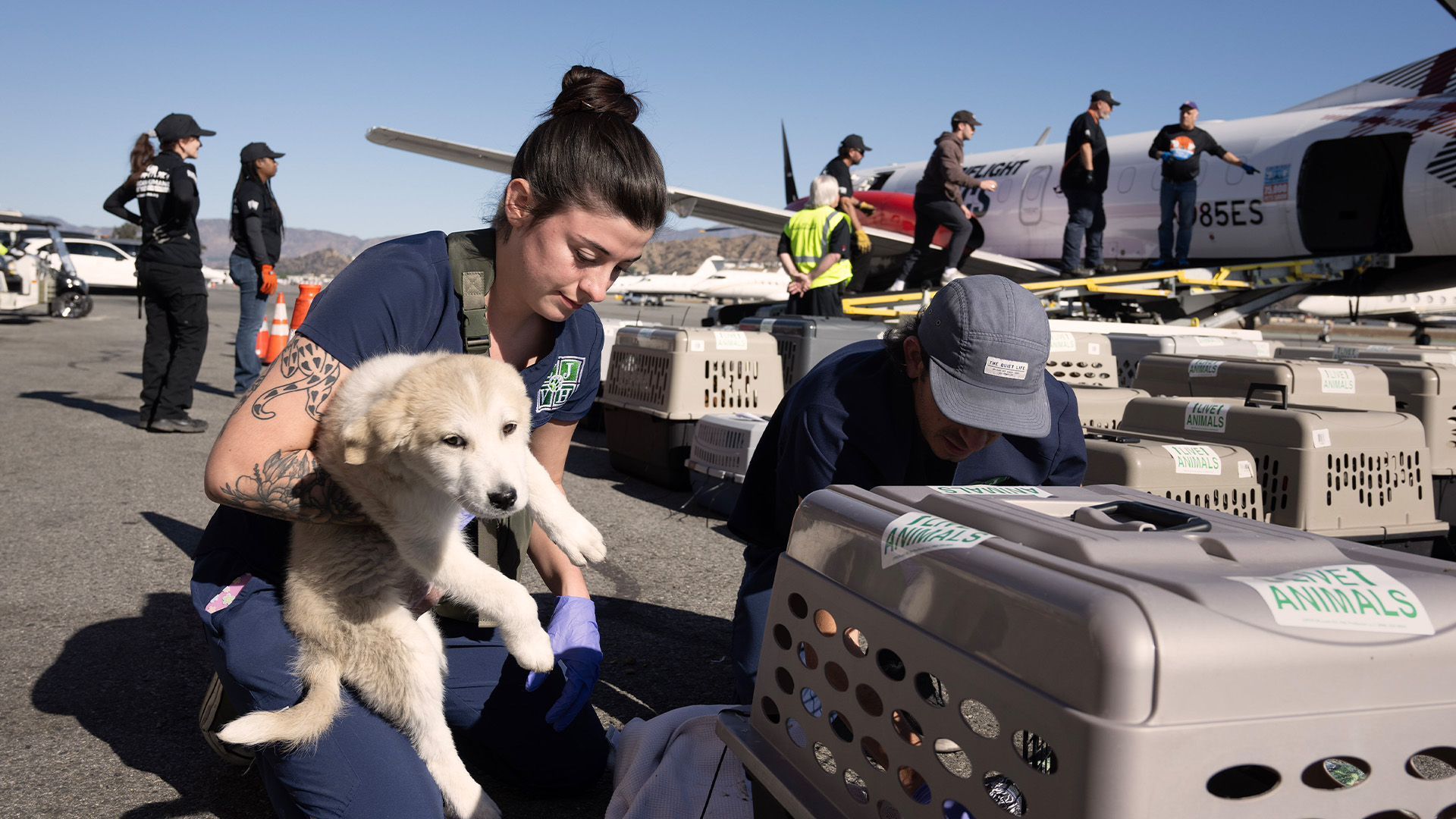
Support for the pets of Los Angeles
Multiple animal shelters and pet charities are helping out non-stop across Los Angeles, and I was fortunate to be in contact with the Pasadena Humane Society. To date, they have taken in over 700 animals that have been displaced by the fires and are treating numerous injuries, including burns, dehydration, and smoke inhalation. Emotional distress creating anxiety and aggression is another problem pets are facing.
Pasadena Humane Society, like most currently involved with pet rescue, is pushed to its limits. Not only from housing and treating animals without owners but also from pets being handed over to them temporarily by pet parents. These are owners who lost their homes in the fires and have nowhere for their pets to live.
Support has also flooded in from selfless individuals offering boots-on-the-ground help and shelters in other cities taking in pets to help ease the volume… some dogs left on emergency flights a few days ago.
Vet, Annie Harvilicz in nearby Marina del Rey opened up her disused hospital to temporarily house pets, and a vet clinic in neighboring Santa Monica offered free treatment and care all weekend to those affected by the fires. Other businesses, such as pet groomers, are offering free grooming and care to fire victims and to the pets of firefighters and first responders.
It goes without saying that all pets, livestock and wildlife are confused, scared and exhausted although it is thought owners being reunited with missing pets is starting to increase. Here are some helpful tips on how to support a scared or anxious pet.
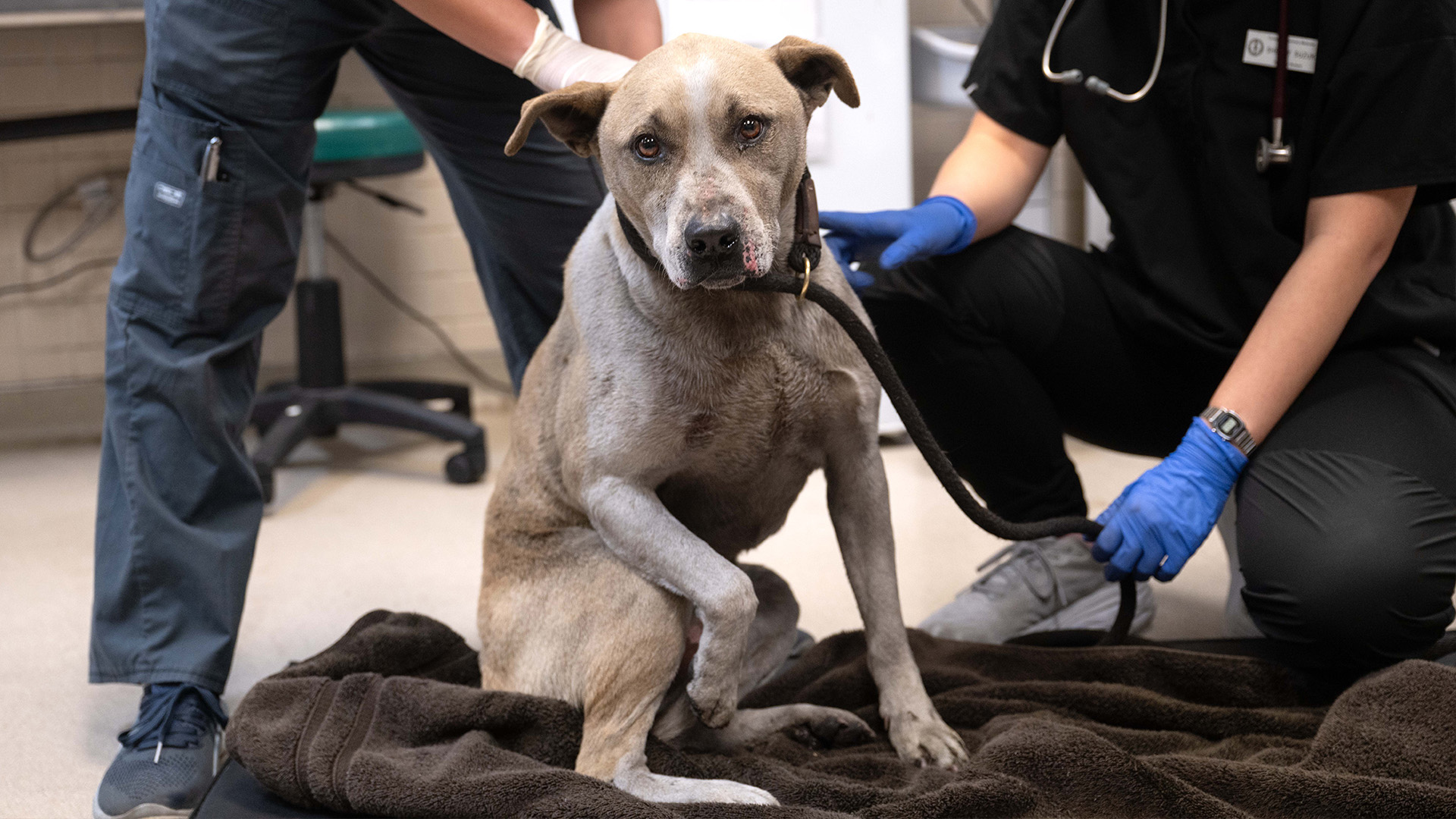

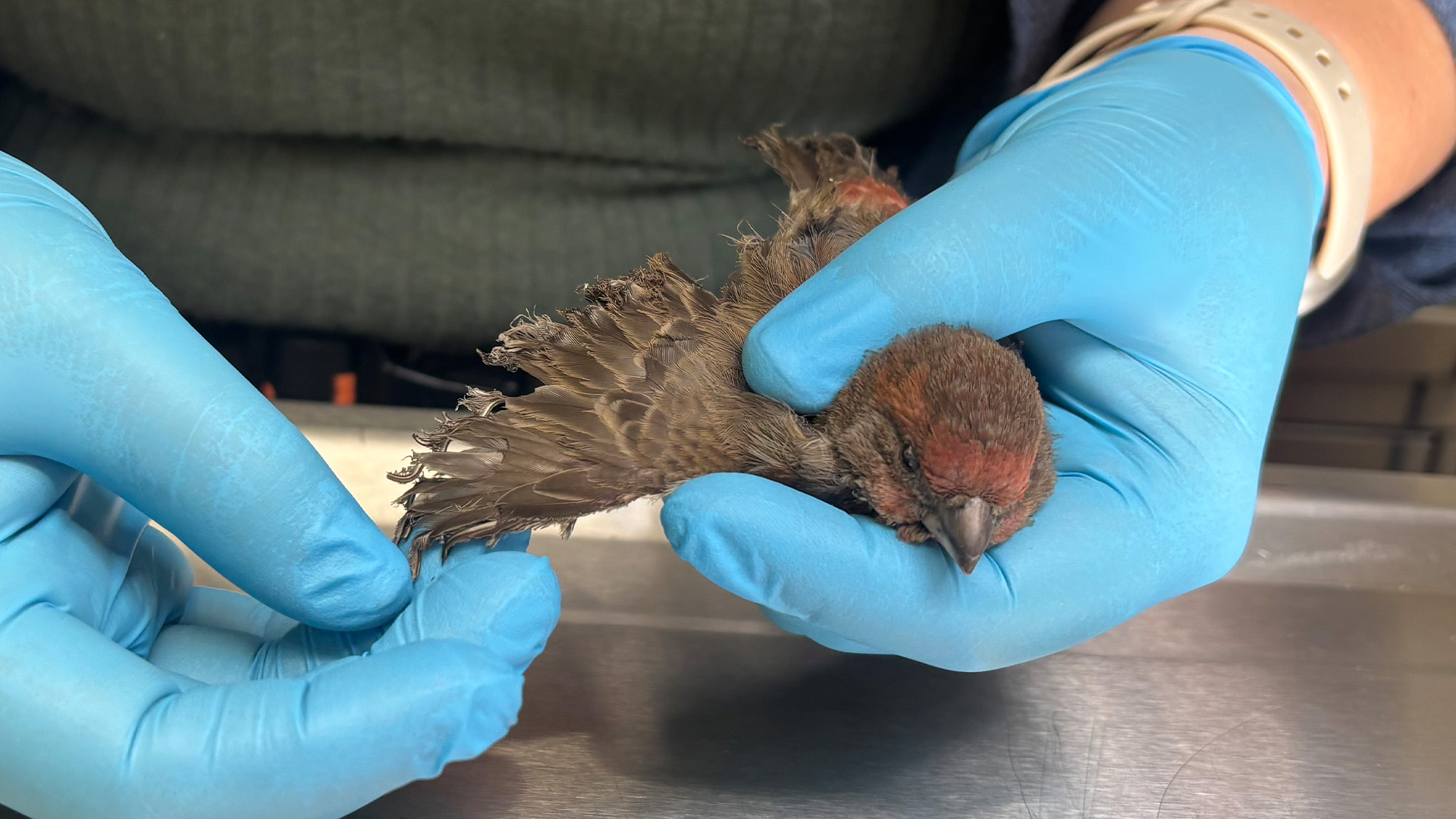

How to help animals victim to the LA fires
How non-residents can help animals in the LA fires
- Donating: This is the best action you can take to help the pets of the LA fires. Consider Pasadena Humane Society, Best Friends LA, Animal Wellness Foundation
- Purchase an item from a Wishlist: Common stores that both organizations and private individuals use are Chewy, Amazon and Walmart. You’ll find direct links on the organizations’ or persons’ websites/social media.
- Donate or share GoFundme accounts you feel called to support. GoFundMe has curated a dedicated page for wildfire campaigns
- Watch or stream pet organizations/pet parents’ content to help raise money
- Check-in on friends, colleagues or acquaintances. A simple hello from a friendly voice can make all the difference to a distressed pet parent
- Spread awareness: Not everyone is aware of the extent of these fires and the harrowing circumstances for pets. Please share if possible.
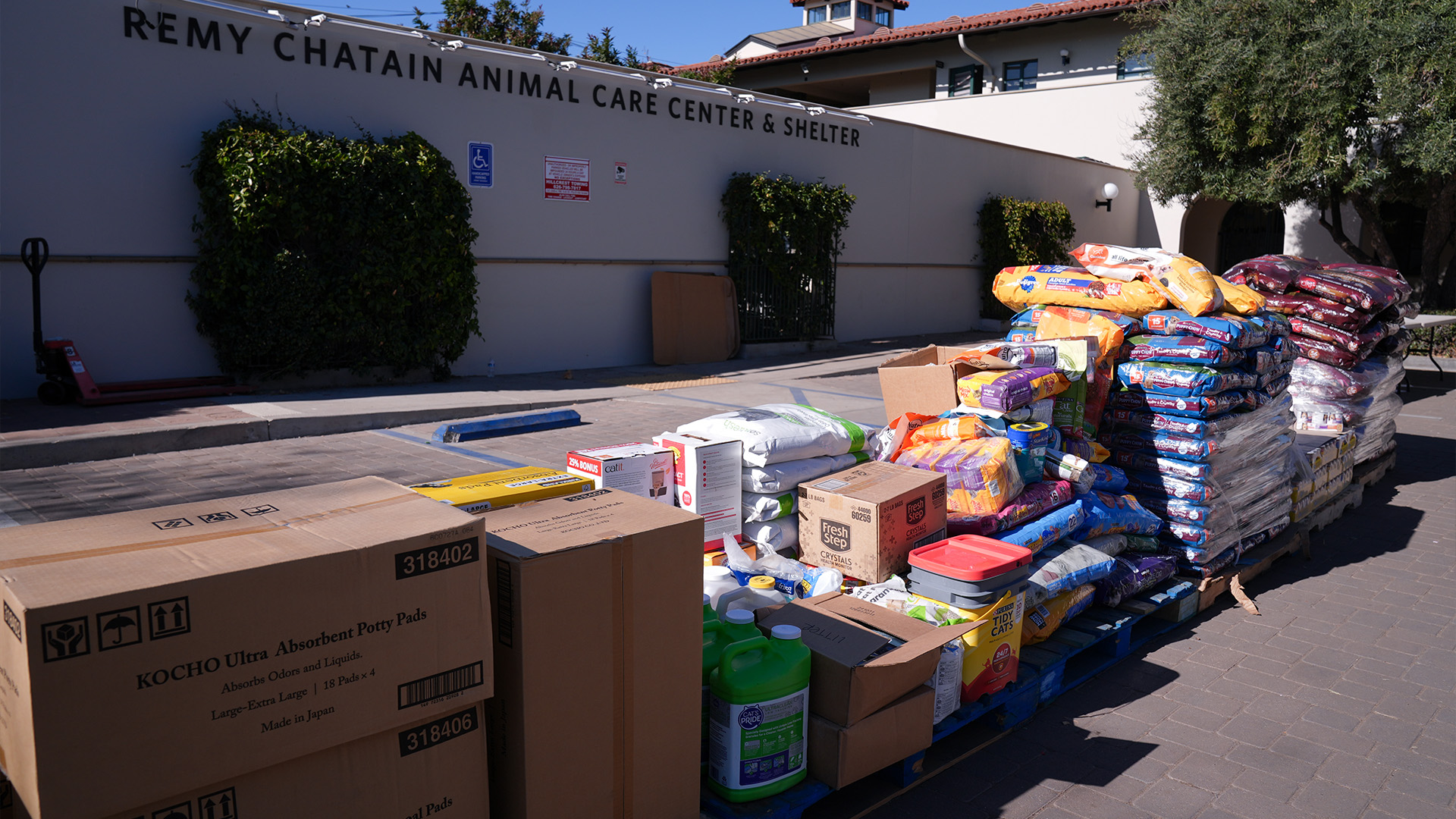
How LA residents can help animals in the LA fires
If you are Los Angeles resident, here are some of the ways you can help:
- Foster a displaced pet while its owner re-builds and finds new accommodation. There are many great reasons to foster a pet.
- Foster or adopt a pet: sign up to foster or adopt a pet at the shelter. This allows for space to be made to accept newly displaced animals.
- Donate money: most organizations and charities need monetary donations to continue their gallant efforts.
- Donate supplies: organizations are accepting donations of pet food, carriers, beds, blankets, and more although some are at capacity for these.
- Volunteer your time or skills: organizations, charities, or private businesses are accepting volunteers to assist with rescues, treatments and looking after the pets. Although some are at capacity for this, including the Pasadena Humane Society, others are still looking for help. Keep checking as this information is constantly changing.
- Offer services for free: Some veterinary clinics or other pet-related businesses, such as groomers, are offering free care for injured and displaced pets and for the pets of firefighters and first responders
- Buy an item: Numerous owners or businesses have wishlists from which you can help by buying a needed item for them
- Horse help: Visit All seated in a Barn, Equestrian Aid Foundation
- Let wildlife in: Wildlife are also homeless, fleeing and scared. Allow them to take refuge peacefully and safely in your yards or grounds should they wander in. Pasadena Humane Society can help with injured wildlife or as the International Bird Rescue also reports on their website:
“If you are near wildlife corridors, please leave bowls of water for fleeing wildlife. They are thirsty and scared. If you need assistance, please call our Bird Helpline at 866-SOS-BIRD (866-767-2473) or reach out to your local wildlife group.”

You should also look out for the following signs of smoke inhalation in animals:
- Coughing
- Gagging
- Difficulty breathing, often demonstrated by a heaving chest or open mouth breathing or increased noise when breathing
- Eye irritation
- Eyes watering excessively
- Inflammation of the throat or mouth
- Nasal discharge
- Asthma-like symptoms
- Increased breathing rate
- Fatigue or weakness
- Disorientation or stumbling
- Reduced appetite and/or thirst
If you’re not in the area but are feeling inspired to help animals, here are 32 reasons to volunteer with a local animal rescue.
Annaliese qualified as a veterinary nurse from Edinburgh and went on to attain a diploma in advanced veterinary nursing in surgery from London. Throughout this time, she worked in both small and mixed veterinary practices and gained head nurse status. Responsible for training other veterinary nurses she also ran the nursing department, nurse clinics, and patient care protocols.
She has looked after 1,000s of patients and owners and created new higher standard nursing regimes, whilst specializing in surgery and anesthesia. After being asked to co-author multiple veterinary nursing textbooks, Annaliese continued to write for further mainstream publications in the UK and USA and after twenty-plus years in both the veterinary and pet care professions, she hung up her scrub suit and now writes full-time.

